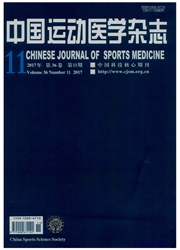

 中文摘要:
中文摘要:
目的:了解高水平网球运动员不同时间间隔条件下反应抑制过程及其脑神经活动特点,帮助提升运动员的攻防转换的调控能力。方法:采用专家新手范式,运用经典实验信号停止任务,采集网球运动员和普通大学生完成任务的反应时和准确率等行为数据和完成反应抑制任务时的脑电活动。结果:(1)专家组的反应抑制成功率高于新手组,成功率随着反应信号与停止信号时间间隔延长而下降;(2)专家组诱发的P2潜伏期在SOA为250ms时显著小于新手组;(3)专家组诱发的N2波幅大于新手组,潜伏期小于新手组,并且在SOA为250ms和400ms时表现出显著性差异;(4)专家组诱发的P3波幅大于新手组,潜伏期短于新手组。结论:网球运动员反应抑制能力强,其优势主要来自于快速停止能力;网球运动员对停止信号的激活速度快,唤醒程度高,占用注意资源多;250ms左右是网球运动员进行错误纠正的最佳抑制时间。
 英文摘要:
英文摘要:
Objective This study tries to investigate the characteristic of brain activation and response inhi- bition ability of elite tennis players under different stimulus onset asynchrony (SOA), in order to improve their offense-defense transition ability. Methods The expert-novice design was used and ethological and event- related potential (ERP)data were collected through the stop signal task. Results (1)The experts showed bet- ter successful inhibition, and the rate of successful inhibition decreased as the SOA duration prolonged. (2) The peak P2 latency of experts was shorter than that of novices when the SOA was 250 ms. (3) The peak N2 amplitude was higher and N2 latency was shorter in experts than that in novices, especially when the SOA were 250 ms and 400 ms. (4)The evoked P3 peak amplitude was higher, and peak latency was shorter in ex- perts than that in novices. Conclusion Results indicated that elite tennis players have better response inhibi- tion ability mostly due to their rapid stopping ability, faster activation, higher arouse and more attention re- source in response to the stop signal. The best inhibition time is around 250 ms.
 同期刊论文项目
同期刊论文项目
 同项目期刊论文
同项目期刊论文
 Corticosterone reduces brain mitochondrial function and expression of mitofusin, BDNF in depression-
Corticosterone reduces brain mitochondrial function and expression of mitofusin, BDNF in depression- 期刊信息
期刊信息
